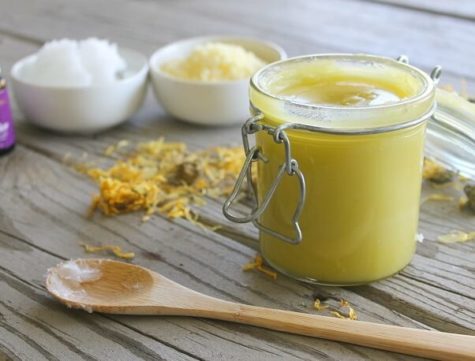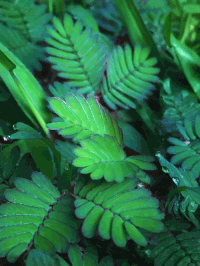How To Make A Salve
A salve is an herb-infused oil with beeswax melted into it. Once cooled, it assumes a consistency somewhere between petroleum jelly and hard lip balm, depending on the amount of wax added and the ambient temperature.
Administration and Dosage Guidelines
Apply a liberal amount of salve to the affected area at least twice a day. Salves are best applied when the skin is hydrated and the pores are open, like after a shower or a soak.
Shelf Life and Storage Guidelines
Salves can be stored in glass jars, metal tins, or nonreactive plastic containers. Choose wide-mouth vessels that are not too deep, so you can reach to the bottom easily.
Salves are very stable, but should be used within 1 year for best potency.
Necessary Tools, Equipment, or Ingredients
- Herb-infused oil
- Beeswax, chopped, grated or pellets.
- Essential oil (optional)
- Small pot
- Shot glass
- Storage vessels
- Labels
Preparing Remedies – Step by Step
In a small pot over low heat, warm the oil gently and slowly. DO NOT boil.
Add the beeswax. Use approximately 1 ounce of wax for every 6 to 8 fluid ounces of oil. For a softer salve, use less wax. This is helpful when it will be applied to sensitive skin, or if used in cold climates. For a harder salve, use more wax. This is better if the salve will be used in hot climates or as lip balm.
Stir continuously until the wax melts.
Spoon some wax into a shot glass and freeze for a few minutes; it will set to its finished hardness. Take it out and test it with your finger to see if it is the consistency you want.
Add more wax to the pot if you want to harden the salve; add more oil if you want to soften it.
Add the essential oil:
- If you are pouring the hot salve into a single storage vessel, add the essential oil after doing so. Stir quickly and close the vessel so the essential oil does not evaporate.
- If you are pouring the hot salve into multiple small vessels, add the essential oil before pouring, stir quickly, pour, and close the vessels immediately.
Label each vessel with the ingredients used, and the date the salve was made.
Pros
- Portable. Salve is a good way to take a messy oil infusion and make it much more manageable.
Cons
- Not for use on wet or open wounds
Salves should not be used on a fresh burn, weeping rash, open lacerations, or puncture wounds. The oil and wax form a seal that prevents airflow and can allow bacteria to grow in the wound. In the case of a burn, that seal prevents heat from dispersing.
Use poultices or compresses until the wound closes up and dries out, and for a burn, until the skin begins to itch.
Additional Considerations
Clean your pot and utensils with paper towels, newsprint, or a dishrag while the salve is still hot and liquid. If it sets, use very hot water to melt it and wash it away.
You can buy empty tubes and pour hot salve directly into them to make your own lip balm.
Source: Herbal Medicine for Beginners
Rennie Luttrull: queen-annes-lace-seeds
Rosanna: Spignel aka Bald Money
Annamarie Squatrito: Fumitory
EILEEN Klinghagen: Pumpkin
Mahmudul Hasan: Celery



Leave a Reply